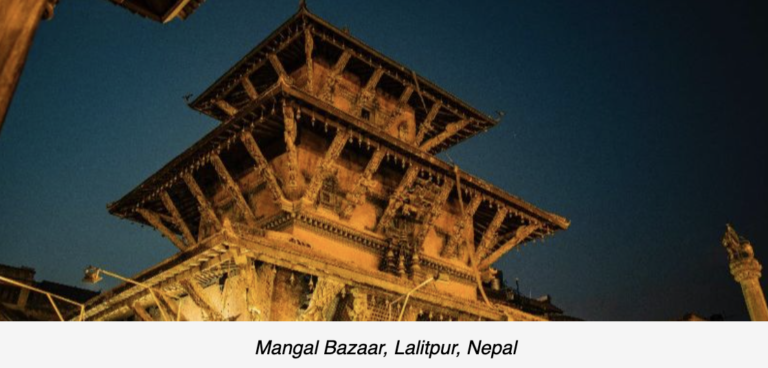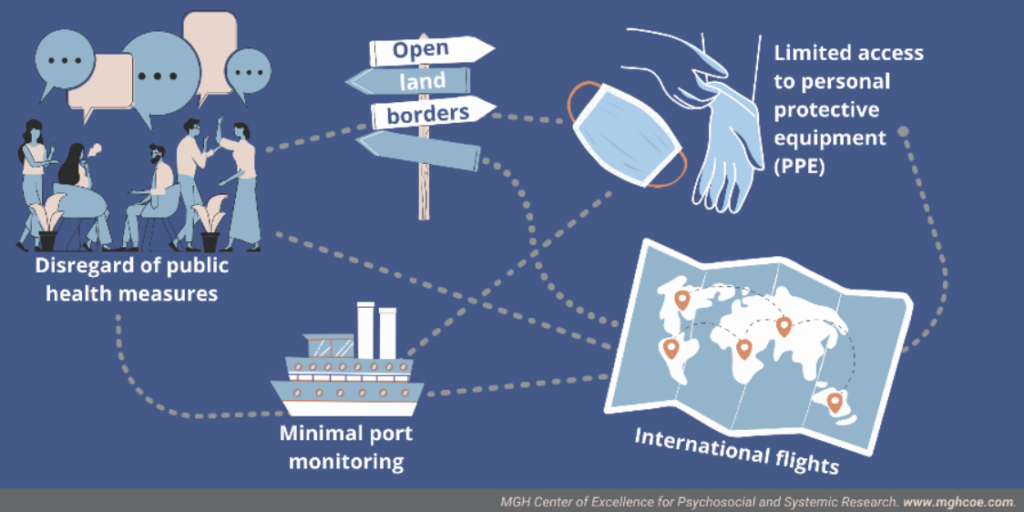Article: Challenges of Responding to the COVID-19 Pandemic and the COVID-19 Vaccine in Nepal

Introduction
Nepal, one of the least developed countries with a population of about 28 million, is a landlocked country surrounded by India and China. The first case of COVID-19 was confirmed in the capital city, Kathmandu, on January 23, 2020. As of April 8, 2021, there have been a total of 278,768 COVID-19 cases (~1% of the Nepalese population) and 3,038 COVID deaths. (1). Over the same time period, the United States has recorded 30,541,000 (~10% of the US population) cases with 552,998 deaths (2). This article describes government efforts to combat COVID-19 to date; however, an urgent concern is the upcoming wave of COVID-19 expected to emerge in Nepal with a new variant, which will necessitate intensified efforts to ensure the safety of Nepalese citizens and residents.
The Early Phases of the COVID-19 pandemic in Nepal
In the early phase of COVID-19, Nepal adopted prevention guidelines from the World Health Organization (WHO). However, there were multiple challenges in its implementation. Some members of the public did not take the pandemic very seriously and thus, did not follow the public health measures. Additionally, Nepal’s borders with India were still open, international flights were still running, and the government had minimal monitoring in the port of entry to Nepal. Moreover, hospital capacity to identify and manage cases of COVID-19 was limited, and the country had little access to personal protective equipment.

Infographic A. Early challenges facing Nepal during the COVID-19 pandemic. Click here to view full size.
On March 24, 2020, after identification of a second case of COVID-19, the government implemented a nationwide lockdown, closed borders, and also developed an emergency response plan. It was challenging for the federal government to convey their guidelines to subnational levels of government, and for local governments to appropriately monitor people in who are in quarantine, but the lockdown appeared to work. By July 21, 2020, only 40 people had died of the COVID-19, and total cases were below 18,000. Eventually, the government ended the lockdown and borders were reopened. However, COVID-19 cases surged again, partly due to difficulties screening the mass return of the foreign migrant workers to the densely populated capital city of Kathmandu. However, overall, the government’s response worked, and COVID-19 has been under control in Nepal.
The COVID-19 vaccination in Nepal
Nepal worked closely with the WHO and UNICEF in the vaccination planning process. By November, 2020, Nepal had drafted a plan to obtain the resources to vaccinate 72% of the population. To obtain the vaccination, Nepal used diplomatic leverages in countries where vaccines were being manufactured. As of April 1, 2021, Nepal has received over 1 million doses from India and 800,000 doses from China as gifts. Nepal was the second country in South Asia, after India, to launch the COVID-19 vaccination, ahead of 132 countries in the world on January 27, 2021.
In the first vaccination phase, the government prioritized frontline workers, elderly people, health care professionals, journalists, staff in the diplomatic mission, and security professionals. The vaccines were distributed to all the provinces in Nepal based on the proportion of the target population. As of April 1, 2021, according to the government data, 6% of the total population of Nepal has been vaccinated, as compared to 22% of the US population.
The major challenge for Nepal in the COVID-19 vaccination plan has been the accessibility of the vaccine. Maintaining cold chains (i.e., temperature-controlled supply systems to transport vaccinations) for multiple vaccines can be difficult and in particular, relying on India for most of the vaccines leads to logistical problems. Recently, India stopped providing vaccines to other countries including Nepal. People in remote communities of Nepal may also face difficulties accessing vaccination sites, especially older people and those with disabilities. Thankfully, it seems that most eligible people are able to travel to vaccination sites, even in rural areas.

Co-Authors
Shreedhar Paudel, MD, MPH
Department of Psychiatry, MGH & Harvard Medical School

Guna Nidhi Sharma, MBBS, MPH
Senior Health Administrator, Ministry of Health and Population, Nepal
https://www.who.int/nepal
References
- Ministry of Health and Population, Nepal. https://covid19.mohp.gov.np
- WHO COVID-19 dashboard. https://covid19.who.int/
- Poudel, K., & Subedi, P. (2020). Impact of COVID-19 pandemic on socioeconomic and mental health aspects in Nepal. International Journal of Social Psychiatry, 66(8), 748-755. doi: 10.1177/0020764020942247